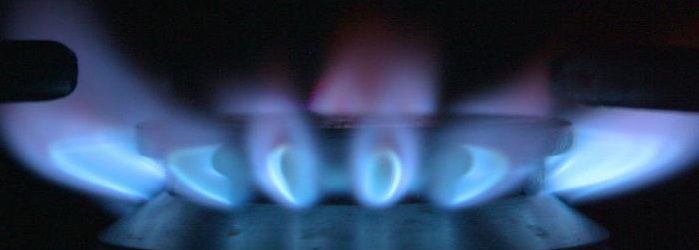Why do we capture methane? Of all the fuel gasses, methane is the smallest. For the chemists among you, each molecule contains one carbon and four hydrogen atoms. It is a very clean burning gas, producing only water and carbon dioxide on combustion. At first glance this seems like a very useful and harmless gas. However, there is a big downside: methane has a much greater global warming potential than carbon dioxide, thirty times more to be exact. Furthermore, a lot of methane leaks into the atmosphere without getting burned. That’s why it is important to control its emission.
Where?
There are several sources of methane. Natural gas contains mostly methane, and as the name suggests this is a product of processes that occur in nature. It is produced during fermentation (or anaerobic digestion). Agriculture and waste management are the two main natural gas emitters. Livestock is a big contributor to this: not only does the fermentation of cow’s manure produce large amounts of methane; their digestive tract also produces large amounts of methane. Landfills are another source as they contain large amounts of organic material.
The third biggest producers of methane are oil and gas production sites. This is due to leaks and production changeovers. Other sources are coal mining, waste-water management, forests, wetlands and rice fields. One surprising source of methane is the melting arctic. Methane that is stored in the ice is released by global warming.
The biggest producer of methane emissions is China (13% of the world total), followed by India, US, Europe and Brazil (9, 8, 7 and 6% respectively).

What can be done about it?
Unlike carbon dioxide, methane is not an easy gas to capture, and is sometimes referred to as a ‘shy molecule’. Studies are ongoing to enable ‘used solid’ structures, called zeolites, to absorb the methane.
Another way is to burn the methane directly and produce carbon dioxide and water, which are less harmful for global warming. This is often done at landfills because it is easy to do. The energy can also be used to produce electricity or hot water.
Gas produced from manure can be managed by controlling the storage conditions and composition. Like landfills, the gases can be flared or used for energy production. Gases from enteric fermentation can be managed by controlling the animal’s food. Scientists in Argentina recently produced a very creative way to trap cow’s natural gases. They have designed backpacks that capture the methane that is produced by the cow.
Methane that is emitted at oil producing sites is often re-injected into the oil well. However, once again, the methane is often flared or used for energy.
What’s stopping us?
Capturing the methane does require some extra equipment that must be installed. It requires an investment and a return on this investment is not always definite. This will depend on how much the energy companies are prepared to pay for the electricity that is generated.
Legislation could help here, and tax incentives for captured methane could certainly improve the situation.
This does not exist in most countries. In the US, this is organised through voluntary public-private partnerships. An example of this is the Global Methane Initiative, an organisation that promotes cost-effective methane recovery through partnerships between developed and developing countries, unifying the private sector, development banks, and nongovernmental organisations.
Want more?
Want to find out in what way sustaining our environment impacts our quality of life? We got you covered! Find out more about sustainability and letting go.


Leave a reply